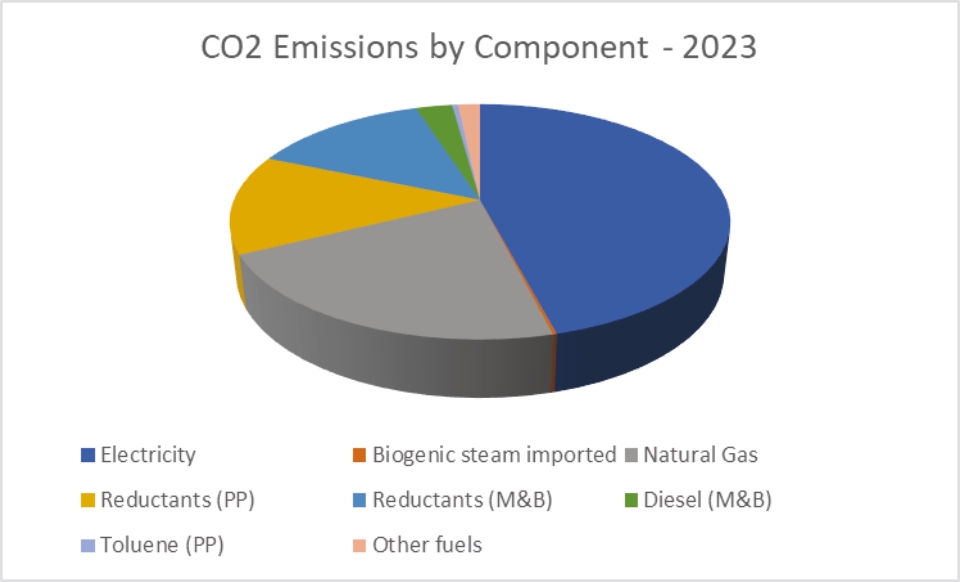be specified in the relevant Award Agreement and may be based on such factors
including, but not limited to: (a) revenue, (b) earnings per Share (basic and diluted), (c) net income per Share, (d) Share price, (e) pre-tax profits, (f) net earnings, (g) net income, (h) operating income, (i) cash flow (including, without
limitation, operating cash flow, free cash flow, discounted cash flow, return on investment and cash flow in excess of cost of capital), (j) earnings before interest, taxes, depreciation and amortization, (k) earnings before interest and taxes,
(l) sales, (m) total stockholder return relative to assets, (n) total stockholder return relative to peers, (o) financial returns (including, without limitation, return on assets, return on net assets, return on equity and return on investment),
(p) cost reduction targets, (q) customer satisfaction, (r) customer growth, (s) employee satisfaction, (t) gross margin, (u) revenue growth, (v) market share, (w) book value per share, (x) expenses and expense ratio management, (y) system-wide
sales or system-wide sales growth, (z) traffic or customer counts, (aa) new product sales, (bb) any combination of the foregoing or (cc) such other criteria as the Committee may determine. Performance Goals may be in respect of the performance of
the Company, any of its Subsidiaries or Affiliates or any combination thereof on either a consolidated, business unit or divisional level. Performance Goals may be absolute or relative (to prior performance of the Company or to the performance of
one or more other entities or external indices) and may be expressed in terms of a progression within a specified range. Multiple Performance Goals may be established and may have the same or different weighting.
9.3 Additional Criteria. The foregoing criteria shall have any
reasonable definitions that the Committee may specify, which may include or exclude any or all of the following items, as the Committee may specify: extraordinary, unusual or non-recurring items; effects of accounting changes; effects of currency
fluctuations; effects of financing activities (e.g., effect on earnings per share of issuing convertible debt securities); expenses for restructuring, productivity initiatives or new business initiatives; non-operating items; acquisition
expenses; and effects of divestitures. Any such performance criterion or combination of such criteria may apply to the Participant’s award opportunity in its entirety or to any designated portion or portions of the award opportunity, as the
Committee may specify.
9.4 Adjustment to Performance Goals. At any time prior to
payment of an Award, the Committee may adjust previously established Performance Goals and other terms and conditions of the Award to reflect major unforeseen events, including, without limitation, changes in laws, regulations or accounting
policies or procedures, mergers, acquisitions or divestitures or extraordinary, unusual or non-recurring items.
9.5 Value, Form and Payment of Performance Award. The Committee
will establish the value or range of value of the Performance Award, the form in which the Award will be paid, and the date(s) and timing of payment of the Award. The Participant will be entitled to receive the Performance Award only upon the
attainment of the Performance Goals and such other criteria as may be prescribed by the Committee during the Performance Period.
ARTICLE X
OTHER SHARE-BASED AWARDS
10.1 Grant. Subject to the provisions of the Plan, the
Committee may grant Other Share-Based Awards that are payable in, valued in whole or in part by reference to, or otherwise based on or related to Shares, including, but not limited to, Shares issued to a Participant purely as a bonus and not
subject to any restrictions or conditions, Shares issued to a Participant in payment of the amounts due under an incentive or performance plan sponsored or maintained by the Company or a Subsidiary, performance units, dividend equivalent units,
Share equivalent units, and deferred Share units. To the extent permitted by law, the Committee may, in its sole discretion, permit Eligible Individuals to defer all or a portion of their cash compensation in the form of Other Share-Based Awards
granted under this Plan, subject to the terms and conditions of any deferred compensation arrangement established by the Company, which shall be intended to comply with Section 409A of the Code. Other Share-Based Awards may be granted either
alone or in addition to or in tandem with other Awards granted under the Plan.
10.2 Non-Transferability. Subject to the applicable provisions
of the Award agreement and this Plan, Shares subject to Awards made under this Article X may not be Transferred prior to the date on which the Shares are issued, or, if later, the date on which any applicable restriction, performance or deferral
period lapses.
10.3 Dividends. Unless otherwise determined by the Committee at
the time of Award, subject to the provisions of the Award Agreement and this Plan, the recipient of an Award under this Article X shall be entitled to receive all dividends and other distributions paid with respect to such Award; provided,
that any such















































